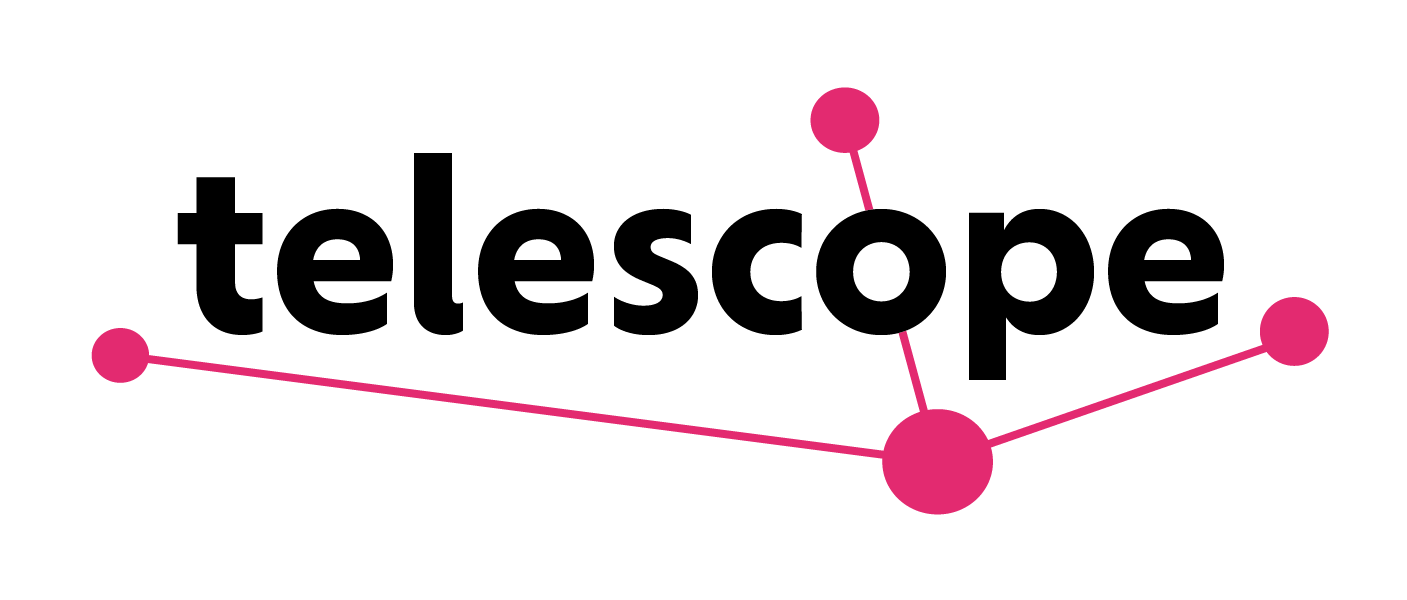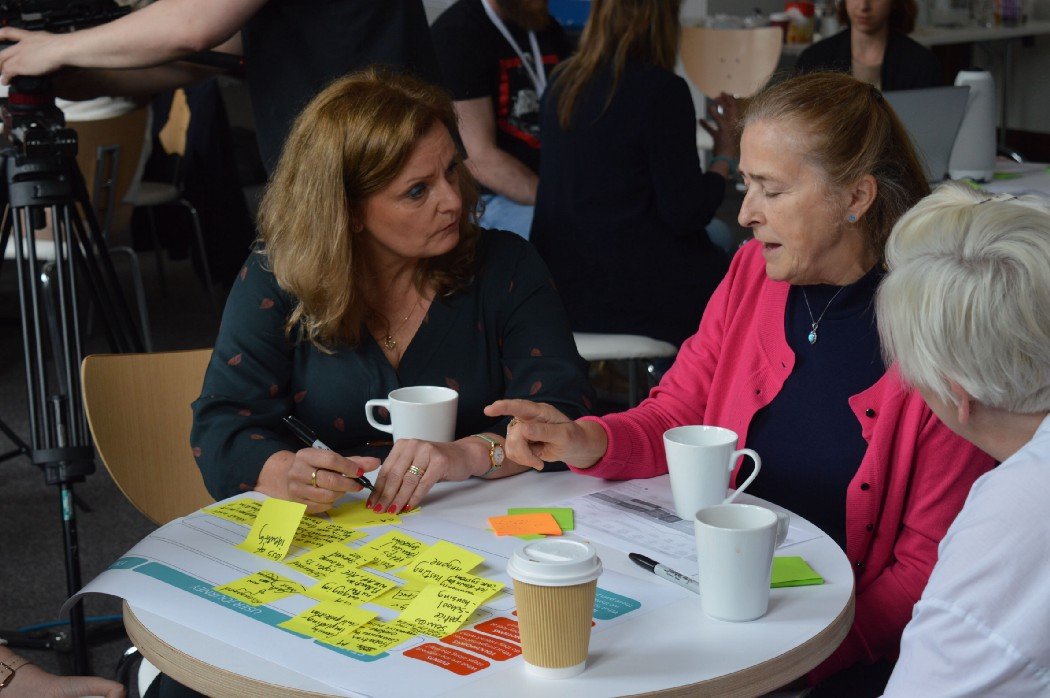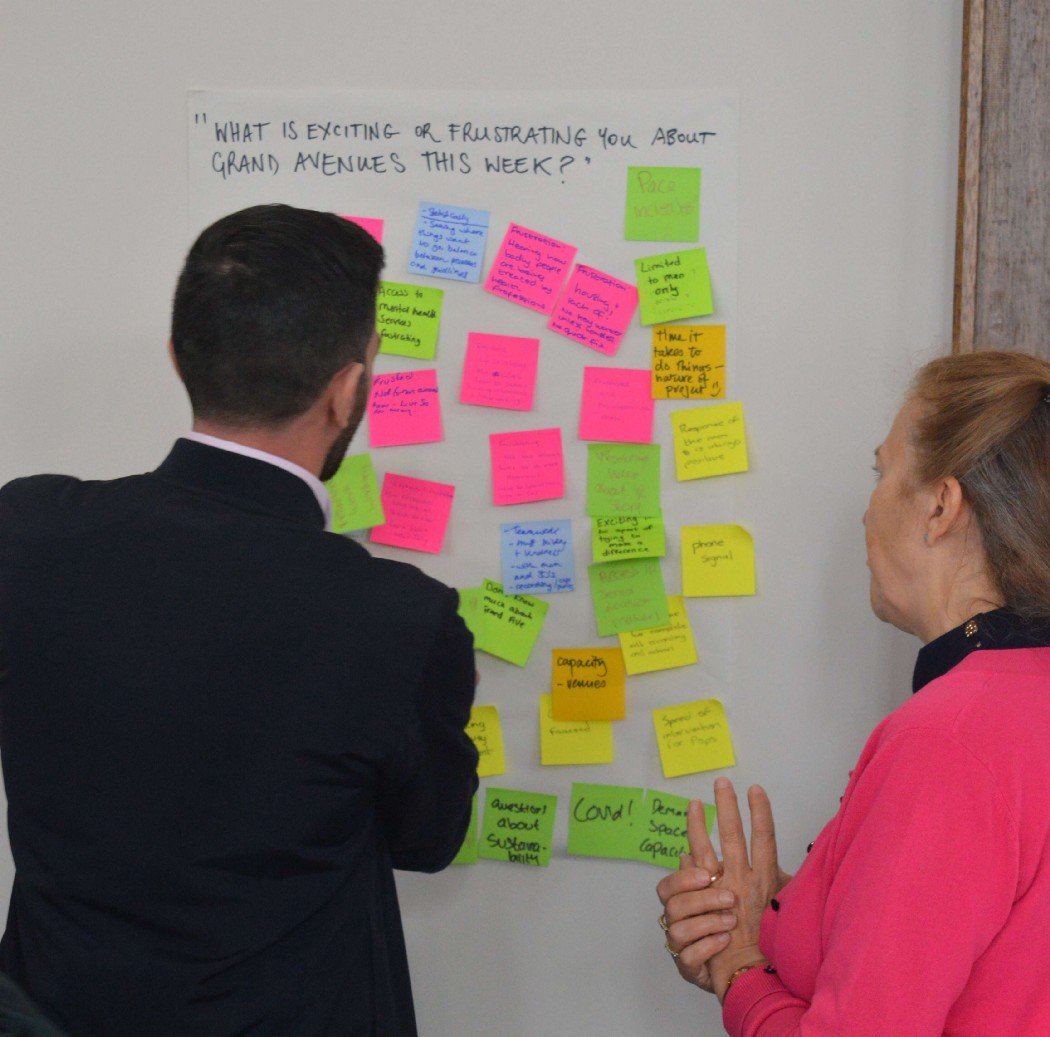Coming back to life: re-starting live facilitation post-pandemic
A recent blog by the World Economic Forum shared ten lessons for a post-pandemic world. Among economic trends on consumer behaviour and redefinitions of fear and risk, one lesson stood out. “Lesson #6: we’re getting more insular”. On the face of it, it makes sense: borders have been closed and slow to re-open, polarisation is on the rise, and supply chains are becoming more localised to avoid dependence on potentially fragile global markets. But we don’t think that’s the full story.
You see, when you’re working in public service transformation, we know that there’s nothing quite like getting together in a room and “feeling the love”. But for more than two years now, many public services have been forced online, into virtual rooms and online appointments, the human connection between us all being put under immense pressure. It can work — we know this from our work supporting the HMPPS Grand Avenues pilot project over the last six months. This group of passionate people, including probation officers, community organisations, and justice policy staff, are building a new approach to probation, which has taken great strides even while much of their work has been restricted by Covid-19. These hard-working experts, even working remotely, have shown the power of collaboration, and their work has led to meaningful reductions in probation breaches and an increase in engagement from service users with the support on offer for them.
With this context, I’m sure you can imagine how powerful it felt when we finally held our first in-person workshop for Grand Avenues in Cardiff on Friday 22nd April 2022. Using a combination of journey mapping and prototyping tools, we helped the Grand Avenues team see how far they’d come, and get excited about what they were going to do next. There was a real energy in the room, from the first icebreaker right through to our final check out.
Of course, returning to in-person workshops again after becoming so used to hosting them online has its challenges. We have noticed quite a few things, from small tweaks we could make to bigger design questions about our support. We’re working to improve our approach and want to share our learnings with you, always in the spirit of collaboration that is so central to our work.
Combining multiple different exercises in small groups seemed to give participants the chance to build up their energy levels organically. By the time we did our group check-out, there was a resounding feeling of joy: as Nicky (pictured, left) put it, “it’s so great to see everyone in person and feel the love in this room”.
Do what you can’t do on Zoom
Sounds obvious, but we noticed immediately that running activities that would not work virtually brought energy to the room that differentiated it from previous sessions. We started the day with a simple integration activity, asking the group to sit in a circle and tell a story one word at a time. Quick-fire words-based activities, or ones that involve movement, are impossible in a “you’re on mute” environment, and yet incredibly energising and fun when done in-person. It immediately raised the energy levels and got people laughing together — a good start.
Be creative in capturing key takeaways
When we run sessions on Zoom, it’s relatively easy to capture the amazing insights, comments and questions that are raised throughout a session. We usually keep a running Google Doc where we note down anything that strikes us during the session, and that can be done simultaneously, invisibly, without breaking the flow of the session. In-person sessions present more of a challenge.
So how to capture insights and questions? We can bring copious Post-It notes for the participants, of course — thrilled as we all are to be back in the world of Post-Its and Sharpies again — but we are keen to explore new ways to capture the depth and richness of conversation from our sessions, that sometimes a small fluorescent square can’t do justice to. What are your favourite ways to capture workshop discussion — do you take notes yourselves or rely on participants? As it was, a train journey back home was filled with frantic noting down of all the things we could remember from the session — hence this blog you’re reading now!
Manage the energy variation
Ideal scenario: everyone who turns up to a workshop is ready and raring to go, with no distractions or lingering weariness. But let’s be honest — that’s unlikely to be the case early on a Friday as you start a session. When we asked our group for a temperature check at the beginning — using hand signals — we were really glad that some participants felt safe enough to share that they weren’t quite there yet, and needed a bit more time (or coffee) to be able to match others’ higher energy levels.
By the end of the workshop, when we repeated our temperature check, we had sparks of energy coming from everyone — a real sense of love and excitement to get going and do more. It was remarkable — and indeed, several participants did comment on the fact that they’d felt their energy rising through the session. By allowing people to be honest and share their true levels at the beginning, we were able to leave space for that to change over time, and see a marked improvement by the end.
Members of the brilliant Grand Avenues team during our latest workshop. “Today was great”, said Julia (pictured, left), a leading voice in the restorative justice space and a firm advocate of bringing the men into our co-production practice as soon as we can do so safely and equitably. The work of the GA team together has already created improved outcomes for men on probation in Cardiff.
Prototypes are more tangible IRL
Even in a pre-pandemic world, the idea of “failing fast” or testing an idea with strangers on the street felt like anathema to many. The design principles of the double diamond and prototyping can be seen as frightening, risky, and at odds with the careful, evidence-based approach that many public service practitioners like to prioritise in their direct work with service users. In many ways, they’re right — mocking up a cardboard VR headset feels very different to prototyping an element of service delivery that could jeopardise someone’s journey through probation.
Prototyping can come in many guises — and doesn’t always have to mean cardboard and tape.
But it’s also exactly the reason why we need to make prototypes. With so much at stake when making big changes to policies and services like these, we need to make sure that we start with the lowest-risk, most low-fidelity tests possible. We need to start small, test and iterate until we know that our hypotheses are validated. We need to bring our ideas to life for service users and other stakeholders, and get honest feedback to steer our course. And all of this is so much easier to do in-person.
We gave participants a prototype planning sheet and asked them to develop a prototype plan to solve one of the pain points they identified. Being on-site where all the work with the men on this project takes place helped us to bring to life our ideas in ways that would be so much harder online. At the end of the day, we’re all about collaboration — we want people with different perspectives on the same social challenge to talk to one another and work out how they can work together to solve problems, one iteration at a time. After all the hurdles of technology and finding ways to make online workshops inclusive and engaging, we are looking forward to doing more of our work face to face again.
During this session, we wanted to give people a chance to surface both concerns and excitement about the project, without getting caught in the weeds of discussion around how to solve these concerns, or build on the excitement. We will be returning to these comments later in the programme, using our sessions in the summer to explore these Post-Its and prototype solutions.
As Amelia put it during our Grand Avenues workshop: “I wish the community [we’re working with] could be a fly on the wall and see what’s been going on in here today, because I think it would show how passionate we all are and build some more of that trust”. Building trust across silos is more vital than ever post-pandemic, especially if we’re going to prevent this insularity we’re being warned about from becoming a reality. Human connection is the only way we’ll build the future we want to see, and we’re doing our best to be part of that project.
What next?
We’ll be building on these learnings and more as we design the next 12 months’ of workshops with HMPPS and others. We are also using this opportunity to reflect on how to get the most out of our online workshops and capture the best of both worlds, drawing on the many benefits we have seen in these pandemic years of online training. To find out more about how we build empathy and collaboration in public services, get in touch. We’re always happy to chat!
And if we’re going to remember only one thing from our first in-person workshop in two and a half years, it’s this: always bring biscuits.




